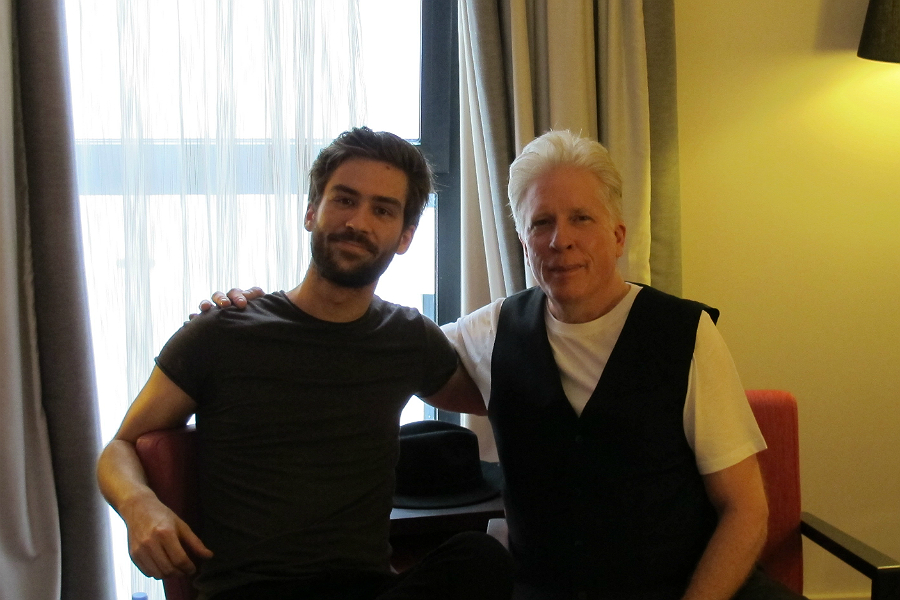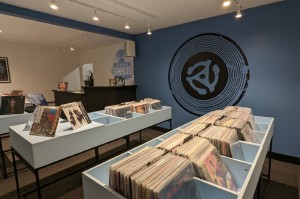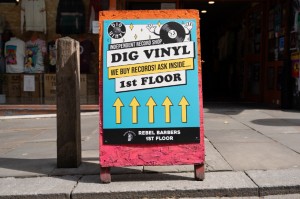Biennial 2012: A Crimson Grail – Rhys Chatham in conversation

Ahead of the UK premier performance of A Crimson Grail, Andrew Ellis speaks to the man behind it all, Rhys Chatham…
This evening, Rhys Chatham, legendary minimalist composer and spearhead of the New York No Wave scene, appears at the Anglican Cathedral for a very special, UK premier performance of A crimson Grail for 100 guitars and 8 basses. Here, we present selected highlights of a conversation between Rhys and producer of the event, Andrew Ellis, from Samizdat Promotions, a film of which will be published next week.
Andrew Ellis: Lovely to see you, Rhys. Your music is often described as being in the canon of minimalism and Avant-Garde. Do you have a preferred term?
Rhys Chatham: It’s my background. In the early 70s I worked in a group of composer La Monte Young. I worked in La Monte’s group and sang with him and his wife. I actually studied with La Monte – in return I tuned his piano. The music of La Monte and Terry Riley tended to be something called minimalism. It’s a convenient handle to give people an idea of what the music is.
AE: Your friends bought tickets for Terry Riley and you begrudgingly went along.
RC: I’d seen a score of Terry Riley’s – I thought it’s gonna be really noisy and dissonant, which was in vogue back then. So I went [and I ended up asking] for my money back. It was $5 – a lot of money for a 17 year old. They refused, so I went back in. I was completely disgusted. Then I gave it a chance and by the end of the concert I’d converted to minimalism.
AE: So this was prior to your time at the Kitchen? Could you tell us a little about that? (Chatham was the first music director at the experimental art space)
RC: I invited composer friends from NYU, but pretty soon we had a concert there every week. At that time, the area consisted of lofts – the artists moved in because the rents were cheap – within a 20 block radius you had a humungous number of artists like Philip Glass … and the kitchen was right in the middle of it.
AE: What inspired A Crimson Grail?
RC: The idea for the piece came from a Lord Tennyson poem called the Holy Grail. The line with ‘a crimson grail’ struck me in-particular.
AE: The New York Times, I think, described it as ‘music to pray to’.
I think that might have come from the negotiation to play the Sacré-Cœur [the Basilica in Paris where the piece was originally played]; I had to talk to the Monseigneur there … This Monseigneur was very serious. He asked for an example, and I gave him the softest thing I could. He said ‘it’s too loud’, but we compromised and played music for half an hour and prayed for half an hour!
AE: Do you see a time when you’d like to increase the number of guitars?
RC: The idea is to surround the audience with guitars in a u-shape – take the sound and send it around the room. It might start in one part and go around. The number we need is however many guitars we need … In Paris I thought I’d need 400 … 126 showed up and I realised I didn’t need 400 – how many guitarists does it take to screw in a lightbulb – no, to fill the space. In Liverpool, we thought 100 would be fine.
Rhys Chatham’s A Crimson Grail is performed tonight 7.30pm at the Anglican Cathedral, FREE





